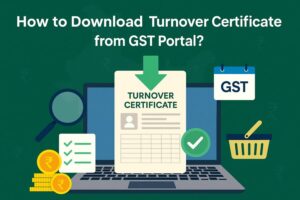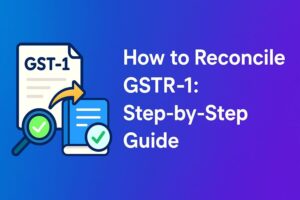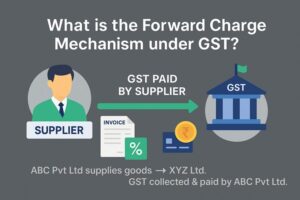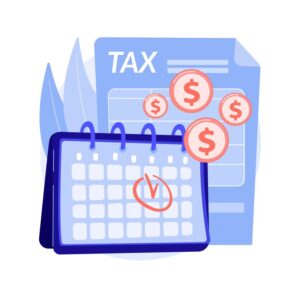Know All About DRC 03 in GST
- 20 Dec 24
- 12 mins
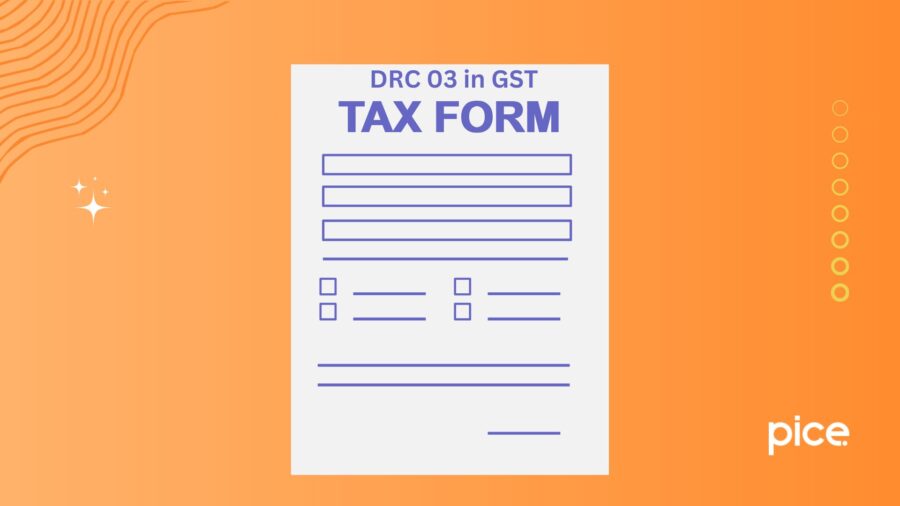
Know All About DRC 03 in GST
Key Takeaways
- DRC-03 Purpose: Voluntary payment of tax liabilities or addressing discrepancies.
- Filing Timeline: Submit before or within 30 days of receiving a show-cause notice.
- Payment Method: Taxes via ITC or cash; interest and penalties in cash only.
- Filing Steps: File online through the GST portal with PRN confirmation.
- Post-Filing Action: Status changes to "Pending for approval," allowing additional payments.
After a financial year ends, the GST Council conducts a detailed audit to identify the tax shortfall of registered persons. The CGST Rule 142(2) and (3) imposes the necessity of filing DRC-03 in GST to indicate any discrepancy found in this GST audit.
This guide comprises key details about the DRC-03 form and also walks you through the steps to file it on the common portal of the GST Council.
What is Form DRC-03?
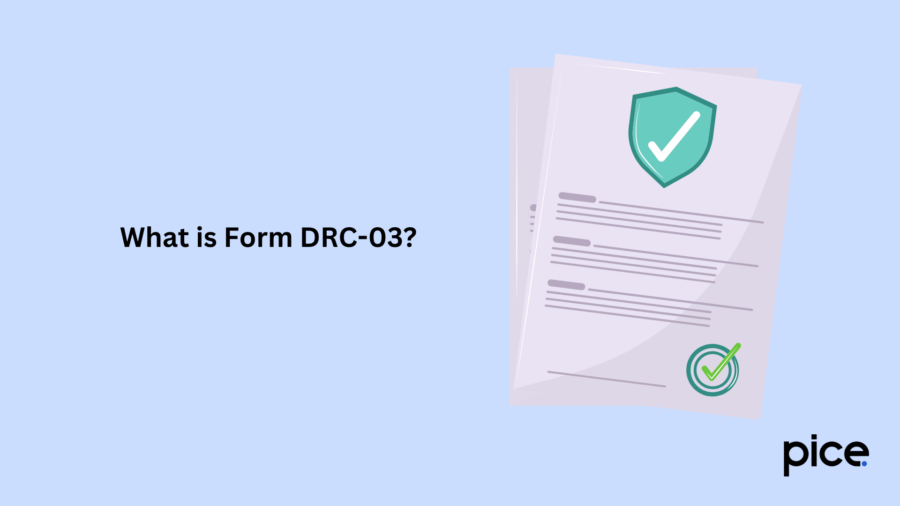
DRC-03 serves the role of a voluntary tax payment form. Using this official document, a GST-registered individual can voluntarily pay outstanding tax liabilities or address discrepancies after the regular GST return filing deadline. Otherwise, when a show-cause notice (SCN) is issued by the GST authorities, you can file this form.
When Should a Taxpayer Make Payment in DRC-03?
Below you can find some valid reasons explaining when is the right time to furnish payments via DRC-03 form:
- Audit/ Reconciliation Statement
Under this head, you are liable to pay tax voluntarily when:
- The concerned GST auditor has discovered instances of insufficient tax payment, due penalties or interests.
- You have claimed additional input tax credit (ITC).
- Time limit for reporting discrepancies in filing GST returns has expired.
After voluntarily paying the necessary tax in DRC-03, you are required to report it in Form GSTR-9. Next, the GST auditor reports the same in GSTR-9C.
- Investigation and Others
If you, being a regular taxpayer, are under investigation and such activities consequently reveal that you have intentionally or unintentionally performed incorrect tax payments, you will be asked to voluntarily make payment in form DRC-03 in GST.
- Discrepancy in Annual Return
All taxpayers must reconcile their financial statements for the whole financial year before they continue to file GST returns. While doing so, if they find any tax liability shortfalls (it can be tax payments as well as penalties or interest), they should actively address such differences.
Most of the time, these kinds of differences happen when non-reporting or under-reporting of taxable supplies are involved. To meet the shortfall of tax payment, you can pay in cash and produce the relevant records while filing DRC-03.
- In Response or as a Demand for Show Cause Notice
Every taxpayer is given the option to settle the tax reported along with interest by accessing DRC-03. However, this action has to be taken within a month of issuance of the show cause notice.
The GST Council issues Form DRC-03 to collect outstanding taxes that are mentioned under Sections 73 and Section 74 of the CGST Act, 2017. Even after receiving an SCN, you can self-check your tax liability within 30 days to prevent additional demand hassles.
Section 73: This segment of the CGST Act deals with underpayment or non-payment of tax with a potential intention of fraud.
Section 74: It states the legal actions that proper officers would take on willful fraudulent practices or misassessment by GSTIN holders.
- Liability Mismatch - GSTR-1 to GSTR-3B
Earlier, you could not find this option while applying for the DRC-03 form until February 2021 when the GST portal officially introduced it. If the proper tax officers have issued a notice for differences in tax liabilities between GSTR-1 and GSTR-3B, then the corresponding taxpayer must complete the required transaction using DRC-03. Otherwise, they can send responses by stating the reasons.
- ITC Discrepancy - GSTR-2A/2B to GSTR-3B
This provision was also introduced on the unified portal in February 2021. If GSTR-3B shows excess Input Tax Credit (ITC) claims i.e. more than the 5% limit allowed by CGST Rule 36(4) compared to GSTR-2B, the tax authority may issue a notice. You need to access this form while compensating for the excess claims.
Remember: You have to make the voluntary DRC-03 payments either via available ITC in the electronic credit ledger or using the cash accumulated in your electronic cash ledger. However, you cannot utilise available ITC to pay the pending interest and penalties. These components need to be paid in cash only.
Prerequisites Before Filing DRC-03
Form DRC-03 in GST is meant for voluntarily settling payment of taxes. You can make these payments either:
- Before the GST Council sends you a show-cause notice, or
- Within 30 days of getting the show cause notice
How to File DRC-03?
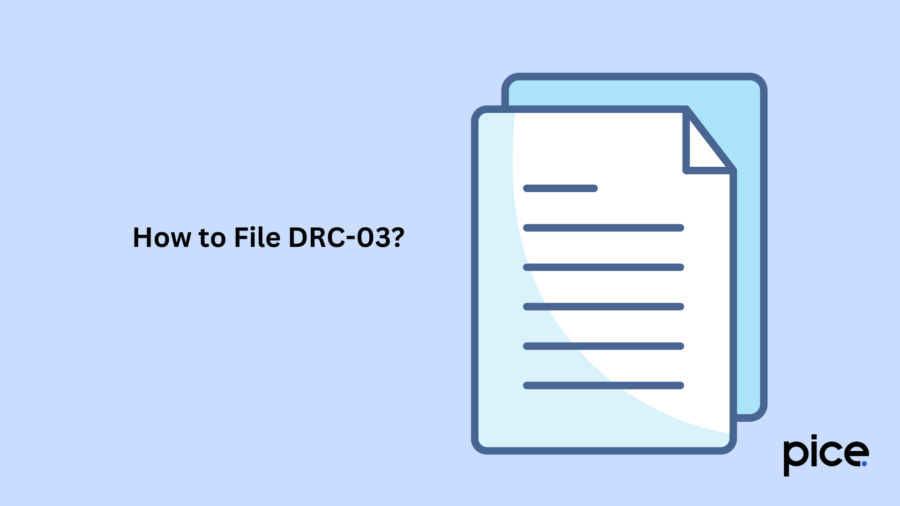
To systematically file DRC-03 returns, follow these steps:
Step 1: Log in to your GST account and open the page dedicated to 'User Services'. Upon navigating you will find 'My Applications'.
Step 2: You have to choose any of the following three options to complete the tax payment:
Case 1: When you have not initiated any payment yet and do not have a Payment Reference Number
Case 2: If you have generated your PRN but have not used it and then try to make a payment within 30 minutes of its creation, you might encounter issues.
Case 3: When your generated PRN remains unused and you try to make a payment after 30 minutes of its creation
Steps to be Performed for Case 1
Step (a): Pick the ‘Intimation of Voluntary Payment - DRC-03’ application type and then select the option ‘New Application’.
Step (b): You will have to select between two payment type options. It depends on whether you are proceeding forward to pay against a show cause notice or voluntarily.
For voluntary payments, the date is auto-populated and you do not get any chance to edit. Whereas, in the latter case, you have to manually put the SCN number before mentioning the issue date. This date has to be under 30 days of settling payment.
Note: You can save your application for the notice of voluntary payment at any stage, provided it is within 15 days of issue. If you fail to file the application within this 15-day window, the GST database will automatically delete the saved draft, making it inaccessible to you.
You may view your saved application by following this path:
Services > User Services > My Saved Applications
Step (c): Highlight the section concerning your payment and select the respective financial year. Next, you will be asked to mention the to-date and from-date of the entire tax period.
Step (d): Enter all the payment particulars comprising penalty and applicable interest. You may submit additional details by tapping the ‘Add’ button. Finally, click on ‘Proceed to Pay’.
Step (e): You will be redirected to the voluntary payment page. Here, you can see the the payment page being divided into three segments.
- Liability Details: All your outstanding liabilities for the overall tax period are displayed here.
- Cash Ledger Balance: In this portion, you can verify the cash balance present on a particular date. You have to provide the cash value from this available fund that must meet the business’ due payments.
- Credit Ledger Balance: Allowable input tax credit as of date is mentioned in this part. The taxpayer must enter the liability amount to be settled through available ITC and select 'Set Off'.
Step (f): You will see a confirmation message showing the cash and ITC balance being utilized for the payment. Then click on ‘Ok’ to generate a PRN alongside a successful payment message.
Note: If you do not get the PRN, you can retrieve it from the ‘Services’ section. Consider navigating to Services > Ledgers > Electronic Liability Register.
Step (g): Preview the draft of DRC-03 by opening the page ‘Intimation of payment made voluntarily or against SCN’.
Step (h): Upload any required attachments in the field provided. Click on the checkbox and tick the ‘Authorised Signatory’ and mention the ‘Place’.
Step (i): Tap on the file and choose between the following options:
File With DSC: Scroll down to see the certificate and click on ‘Sign’.
File With EVC: You will receive an OTP on your registered email address and phone number. Upon validating the OTP, you will get a success message with ARN.
Steps to be Performed for Case 2
Step (a): Execute the steps as instructed in case 1 till the stage where you get to choose ‘Intimation of payment made either voluntarily or against the SCN’.
Step (b): Choose ‘Yes’ as a response to the query - ‘Have you made payment?’ and provide the PRN.
Step (c): You will get a link mentioning ‘Get Payment Details’. Once you click on it, you will see certain details being auto-populated based on the payment you recently made.
Step (d): Tap on ‘Preview’ to see the draft of DRC-03 and then carry out the same instructions as mentioned in case 1 above.
Steps to be Performed for Case 3
Step (a): To access the Intimation of payment made voluntarily or against the SCN page, you must follow the steps listed in case 1.
Step (b): Pick the option ‘Yes’ for ‘Have You Made Payment?’ and provide the Payment Reference Number.
Step (c): You will see 'Get Payment Details' on your screen. Click on this link and provide the necessary information as the fields stay blank and are not auto-populated which was the case in scenario 2. It occurs because you have already crossed the predetermined deadline of 30 minutes.
Step (d): For filing the DRC-03 form in GST, kindly follow the same steps as told in case 1.
Note: If you have already used the PRN with respect to Case 3 and Case 2, you will see an error message asking to provide unutilised PRN.
Where to Report Cash Payments in GST Returns?
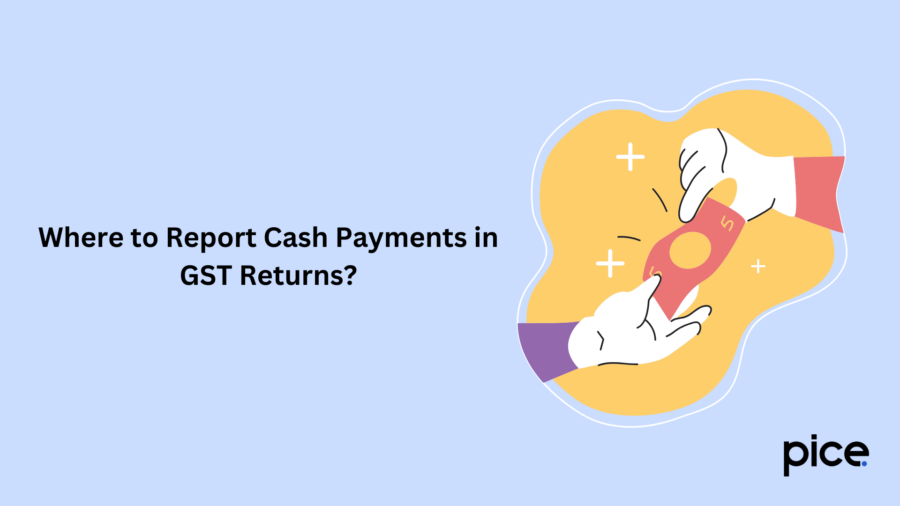
A taxpayer reports different cash payments across GST returns in the following manner:
| GST Tax Return/ Application | Electronic Cash Ledger |
| GSTR-9 (Annual Return) | A taxpayer must settle any pending tax liability that was not addressed while filing GSTR-3B. One can utilise the available electronic cash ledger balance to meet their outstanding liabilities. If a person’s liabilities exceed the available cash balance then they can draw a challan to make additional cash payments. |
| GSTR-3B (Monthly Return) | A taxpayer can use their cash ledger balance in ITC to furnish monthly payment of taxes. When the amount exceeds the balance in the input tax credit, the individual have to pay in cash. |
| For Demand Notices | When you get a demand notice, consider utilising ITC and the balance cash in your cash ledger to meet the outstanding GST. You have to issue an additional challan if the amount of liabilities exceeds the cash ledger balance. Finally, if you need to pay penalties and interest then the cash payment mode is the only valid option. |
What Happens After Filing DRC-03?
You can notice the status of your filing being changed to ‘Pending for approval by Tax officer’. Also, a notice issuance follows from the income tax officer in the form GST DRC-04.
Note: No restrictions are placed to make additional voluntary payments in instances where the acknowledgement from the tax officer is yet to arrive.
Conclusion
DRC-03 in GST is issued to all taxpayers who owe GST to the government. However, it is crucial to realise that settling DRC-03 dues is not a replacement for filing timely business tax returns. You still need to complete the steps for return filing even after filing DRC-03 as per the prescribed methods discussed above to maintain business compliance.
💡If you want to streamline your payment and make GST payments, consider using the PICE App. Explore the PICE App today and take your business to new heights.
 By
By 





